
I will be attending Burning Man again this year, my fifth. The event was canceled in 2020 and 2021, and I was in Germany in 2022, so I have missed three years. I will be going out onto the Black Rock City lake bed again this August to join my compatriots for a week of art, unbearably hot weather and blinding dust storms. What fun!
I have written about Burning Man before, mostly about cameras, photography and dust. You can read those articles here and here and here.
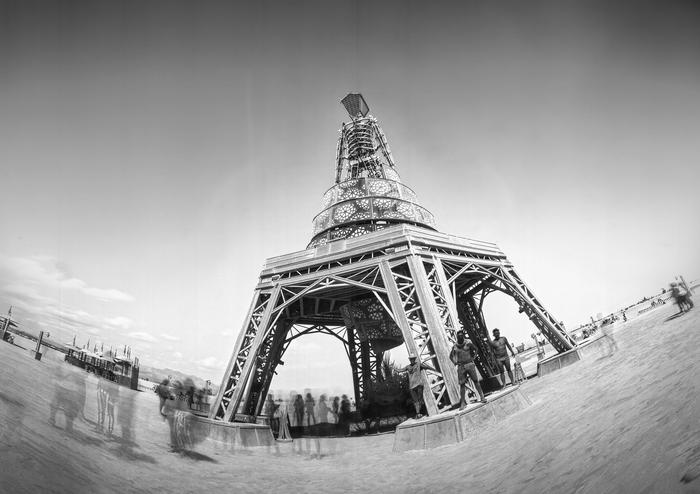
I belong to a Burning Man camp – The Pinhole Project. I joined that camp in 2018. Our purpose is to document, using huge pinhole cameras, the artworks that are installed on the Playa at Burning Man. These are the works made by people from all over the world and brought to Burning Man as expressions of ideas as diverse as the population of the event.
As you probably know, Burning Man is a gathering (not a music festival, not a happening – not a lot of things) in the desert of western Nevada. The location is a huge dry lake bed about 100 miles northeast of Reno. Annual attendance is about 80,000. That’s a lot of people – about twice the population of the city where I live. The theme of the event changes annually, but the principles remain constant: radical self-reliance. It is an opportunity for people to gather and express themselves in all ways imaginable. At Burning Man, nothing is for sale (except coffee drinks and ice) – it is a gift economy where everything is freely given. It is also an opportunity for artists to express themselves on a canvas of immeasurable size.
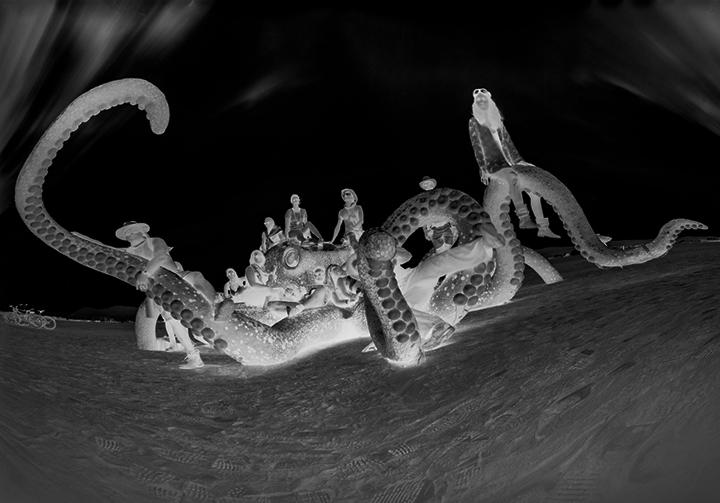
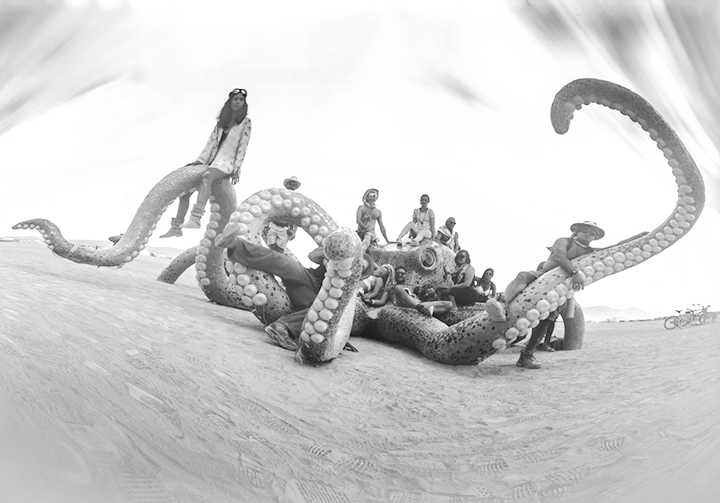
Called Black Rock City, Burning Man occupies a section of the dry lake bed about 10 miles square. There is nothing there before the event, and there is nothing there after the event. People come with tents or camper vans. Some take the bus, some bring cars, some come in private jets (there is an airport). Everyone camps on the Playa, which is set up in a circular pattern with concentric rings and spokes. The rings are alphabetical, the spokes are according to the hands on a clock. Camping is in a hemisphere between 2:00 and 10:00; the concentric rings begin about half-way from the center of the circle.
In the very center is the Man. This is a huge sculpture/structure made mostly of wood that is erected in the center of the site. On Saturday night it is burned, which is where the event gets its name.
The upper and center part of the lake bed, where there is no camping, is called The Playa. It is the location of over 100 works of art, each of which is built by a different group, and erected on the site in the days (sometimes weeks) before the event. Some of these works are huge – multistory buildings, huge sculptures, castles, stacks of wrecked cars – and sometimes they are small. In 2019 there was the Little Chapel of Thoughts and Prayers, a small church-like building made entirely of bullets, shells and gun parts. It was built of irony.
Our camp, as Burning Man group encampments are called, has a large space allocated to it. This year we will be at 2:30 and B (I think). In that camp we put all of our tents, yurts, RVs, cars and our cooking/pantry trailer. Each year we also have a 20-foot container delivered (this is stored in the desert year-round and is delivered by the Burning Man organization each year).
In this container is our darkroom, because the art we make is wet chemical silver nitrate photography. We use 45-gallon hardboard drums, inside of which we mount 30 x 40 inch photographic paper, held in place with magnets. On the opposite side of the paper is an aperture, a microscopically small (0.24mm) laser-cut hole in a sheet of titanium or aluminum. This aperture is the entrance point for light to expose the photo paper. The shutter is a magnetic sheet attached on the outside of the drum.
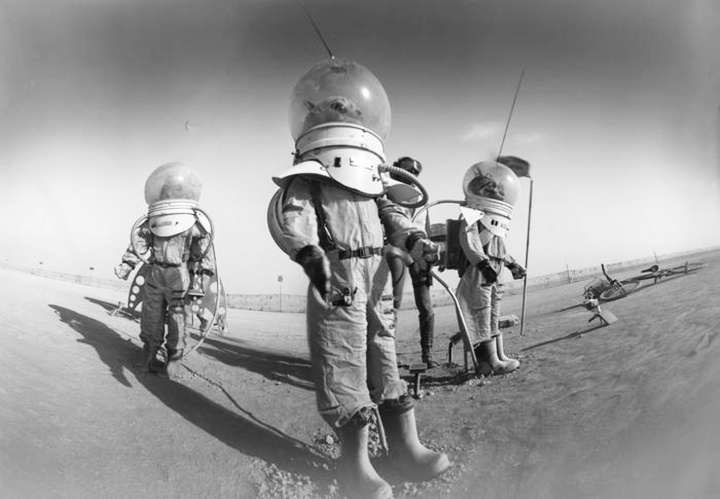
We take eight of these photographic drums – pinhole cameras – out onto the Playa each morning, and again each afternoon, to photograph the amazing artworks that have been erected there. When finished, we return to our camp and take the cameras into our container darkroom where the large sheets of photo paper are processed in large trays of photo chemicals.
The darkroom has an air conditioner inside. It often exceeds 100 degrees Fahrenheit at Black Rock City, so we really need it. And, we have a community cooking area with a refrigerator and a freezer, both of which are standard 110 volt appliances. In past years we have had rental generators that run on gasoline to power our electrical needs. Those generators were too small and they tended to fail often. We were looking for something more capable this year.
One of my camp partners found one on Craigslist. It was advertised as a U.S. military surplus diesel generator, designed for field deployment. It weighs 800 lbs. and generates 5000 watts of continuous power. It can run uninterrupted for days.
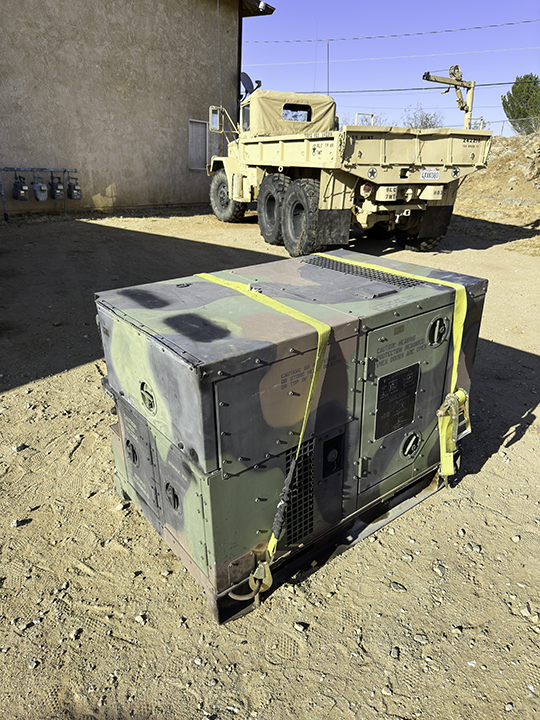
I live the closest to the location of the seller so I agreed to go get it. I saddled up my Volkswagen Touareg and headed east… a long way east, to buy it and bring it back. En route I rented a U-Haul trailer and attached that to my car (I didn’t need to drag the trailer both ways). After several more hours on the road, I reached the destination where my new friend Cory showed me this behemoth device, started it up to show that it runs, and helped me to get it on my trailer (that required a winch).
After four hours more driving, I pulled up in front of my house then headed off to sleep. In the morning I delivered the generator to the shop of my friend Hank, who is the finest welder I have ever known. My plan is to have Hank build a trailer to carry this new generator so that we can get it to Burning Man, and then use it for the week to make the electricity we need for our camp.
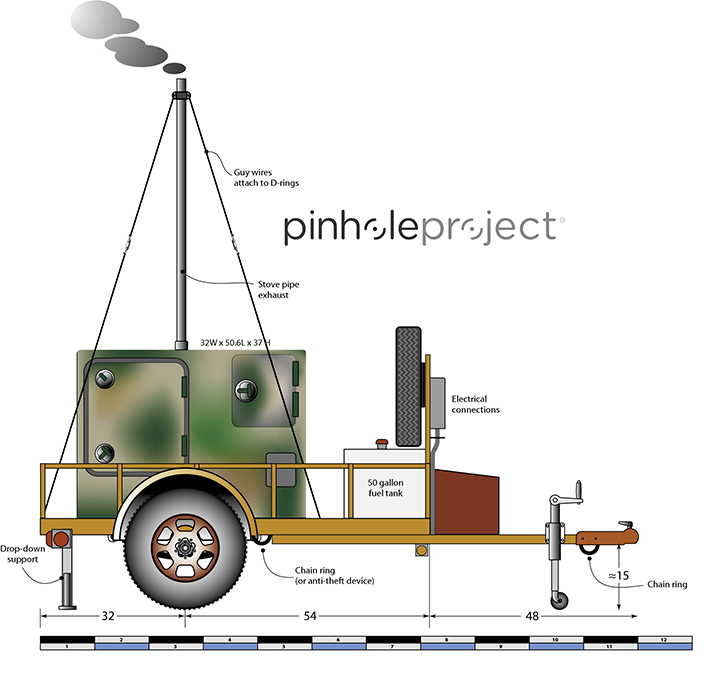
I have never designed a trailer before. I did my research and determined how long and how wide and how strong it needed to be. Then I found several online trailer parts suppliers (eTrailer is one). Over the following weeks I drew variations of the generator trailer, then perfected my drawings to give to Hank so that he can fabricate this work of vehicular art. All of the parts have now arrived and he will begin welding on Monday.
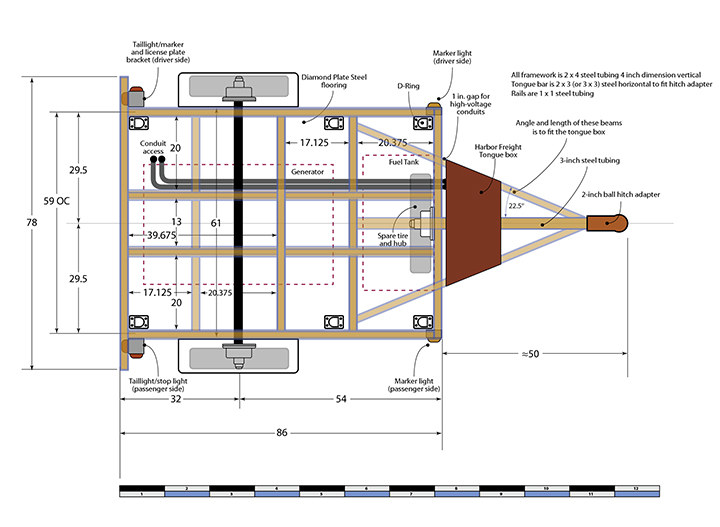
I started my work in Adobe Illustrator, drawing at a reduced scale. I added the generator, a large fuel tank, and a tongue box for tools and extras that we might need – filters, oil, coolant, a spare V-belt. I decided to add a spare tire and wheel, a spare hub and bearing set (can’t afford a break-down in the Nevada desert), and some tie-downs for things I might add to the trailer on its way to Burning Man.
I’ll write a few episodes in this adventure to show the process.
